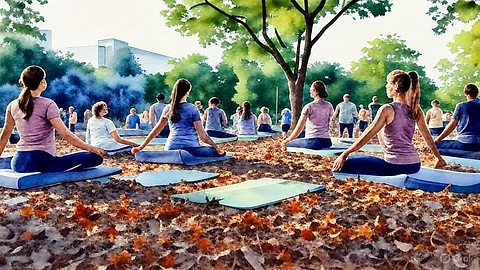Yoga has long been woven into everyday life, especially in India, where it often shows up as routine or ritual.
As we mark another International Yoga Day, here’s a look at what the theme means this year, and how more Indians are (or aren’t) embracing the practice.
Why International Yoga Day Is Celebrated
Prime Minister Narendra Modi proposed the idea of celebrating International Yoga Day at the United Nations General Assembly in 2014. He highlighted yoga’s universal appeal and suggested June 21, which marks the summer solstice in the Northern Hemisphere.
A total of 175 countries supported the proposal, and the first International Yoga Day was celebrated back in 2015. Since then, the day has come to symbolize the harmony between human wellness and nature across the world.


